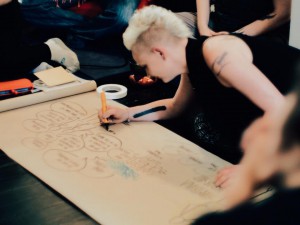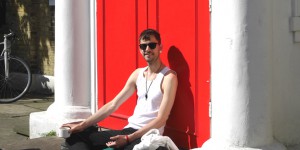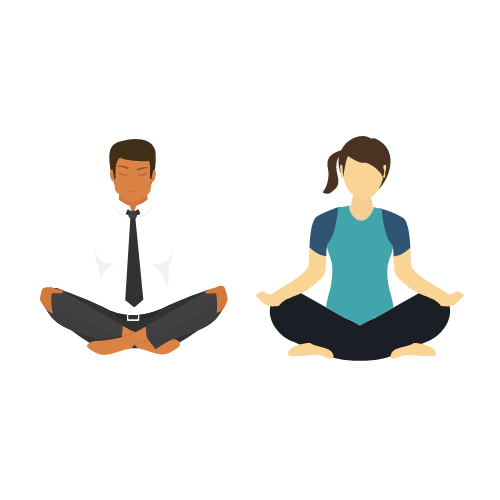Warriorship in Relationships
 There is a scene in The Karate Kid, towards the beginning of the film, where Mr Miyagi walks into a room past Daniel (the karate kid) who has a black eye and is kicking up and down through the air: ‘Ooooh karate!’ Mr Miyagi says, and with faint irony: ‘learn from books?’
There is a scene in The Karate Kid, towards the beginning of the film, where Mr Miyagi walks into a room past Daniel (the karate kid) who has a black eye and is kicking up and down through the air: ‘Ooooh karate!’ Mr Miyagi says, and with faint irony: ‘learn from books?’
In my last article, for the London Shambhala Centre’s June newsletter, I
said that I would say more about three forms currently being utilised in
Shambhala especially by the Ziji Collective: Open Space Technology, the Art of Hosting, and Social Meditation. I have used the scene from the Karate Kid as my opening gambit as a kind of disclaimer. These forms need to be experienced straight up, they cannot be described. Nevertheless I’ll try to sketch a little around each.
Social Meditation is a practice to foster vulnerability and genuine
communication. In Mexico I attended sessions, almost reminiscent of Quaker meetings, led by Shastri Nick Kranz who developed Social Meditation alongside Acharya Lobel. We sat in a circle, facing each other closely on chairs, with excellent posture and resting our minds in open meditation.
Nick facilitated the session lightly and with precision, and there was a
sense of communication, language and action – for example dyads arising
spontaneously from the cross-hatch made in space of our minds. The feeling
was one of being seen and seeing at the same time and that nakedness being
liberating and OK.
I will say even less about the Art of Hosting than I have about Social
Meditation except that at the leadership retreat in Mexico it in some way
formed the ground for everything else. Art of Hosting is an organic
conglomeration of processes developed, and combined, to make useful and
meaningful conversation happen. From among the literature on The Art of
Hosting I find this intriguing paragraph: ‘Humanity was made by the circle,
by the need to find ways to gather and sustain ourselves and come into
agreements of socialisation that allowed us to flourish into bigger and
bigger units. The circle was the paradigm shift at the foundations of our
human evolution, and collaborative conversation is the paradigm shift again
that will prevent our extinction.’
Open Space Technology, the third of the three forms, is one of many
processes used by the Art of Hosting community. It actually originally
stems from the business world, anecdotally developed because someone
noticed that all the best conversations were happening in the coffee breaks
between the meetings themselves. It is a simple, powerful method to empower a group of people to speak about the things they actually care about.
The leadership retreat in Mexico was thick with all three of these
practices, and I have never been in a space where I was able to trust my
own mind to such a profound extent, or the collective wisdom of the group,
as much as when at Casa Werma.
In writing this article I have been contemplating how this relates to
warriorship. There is a sense of the tremendous importance in all three of
these of the primacy of communication. I recollect hazily a quote from
Trungpa Rinpoche – perhaps it is in *Great Eastern Sun* – where he says
something to the effect that you would look someone straight in the eye
before you kill them. It is not enough to let someone down with a text
message when we could instead phone them. Email is powerful and has its
uses, but Skype is better. Better still is to sit in a circle and look each
other dead in the eye.
Sitting in a circle is actually a perfect symbol for trusting the wisdom of
others and drawing upon that. Warriorship, a solitary path, comes alive in
relationships. At best there is the complete absence of any kind
of patronising attitude, relating instead to friend or foe alike with
powerful connection and respect. These practices shocked me. Especially
Social Meditation which feels so unpredictable as to be dangerous. I am
reminded of practising calligraphy with Marcia Shibata and having the
profound and deeply enjoyable experience of having absolutely no idea in
what direction my hand could move next – and resting there.
This is my sense of all three of these practices: that there is a deep appreciation of what might happen as it happens. This is exactly in tune with the meaning of the word karate which literally translates as ’empty hands’. There is a single way to face reality and that is with a mind that doesn’t stick.
 Llew Watkins has been practicing within the Shambhala sangha for twelve years. He is also a student of Mingyur Rinpoche and Lama Shenpen Hookham. He is an artist and writer currently based in London.
Llew Watkins has been practicing within the Shambhala sangha for twelve years. He is also a student of Mingyur Rinpoche and Lama Shenpen Hookham. He is an artist and writer currently based in London.
Llew has also just started a young person’s drop-in meditation class at Cable Yoga in Limehouse every Tuesday from 18.30 to 19.30. You can email him at [email protected] to find out more.



